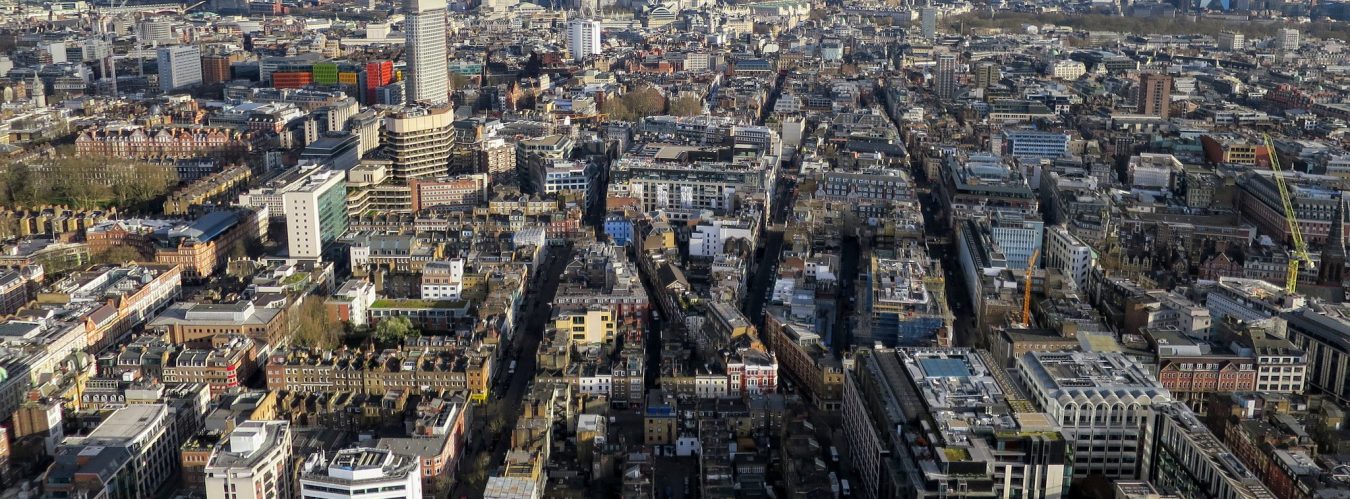The CGCA and other Central London residents groups completely support the objective of the West End Project. These include reducing the traffic impact in the West End, reducing pollution and improving conditions for cycling and walking as well improving the Public realm in the area.
We are though very concerned about the impact on traffic congestion, especially to the South of the project area because we do not believe that the modelling which has been done adequately reflects the likely outcome.
A key part of the project is to close Tottenham Court Road to all traffic except buses and cycles.
This means that all other traffic will need to use Gower Street/Bloomsbury Street to go North and South. It also reduces the capacity of the junction (Bloomsbury Street, Shaftesbury Avenue, New Oxford Street) by 30%. This will make the area much more congested. The reduction in traffic which makes the scheme work comes about because this congestion will encourage drivers to take alternative routes or forms of transport. The road changes cause congestion – the congestion changes the behaviour and the change in behaviour reduces the traffic. The route changes will increase East/West traffic flows to the South through Covent Garden and Soho as drivers use other North/South routes to get to the West End.
Congestion on Gower Street and in the South of the area are an essential part of the design of the project.
If the impact of the changes on traffic flows is what makes the project work then it is critically important that the modelling done is correct. The Officers Responses in the Consultation report include the phrase “The traffic impact of the proposals have been assessed using an approved TfL traffic model” 38 times. What happens if the modelling is wrong? We believe that there is a significant risk that it is wrong, least for the South of the area. The risk that the modelling does not reflect reality is one of the “Key Risks” listed in Section 5 of the report as 5.8 – Impacts following construction. This argues that traffic modelling is imprecise but is usually conservative but that funding will be allocated to do before and after traffic measurement and, where possible and appropriate, measures to mitigate the impact will be investigated and implemented.
We do not believe that this goes far enough. We think that far from being conservative the traffic modelling is very optimistic and significantly understates the likely peak traffic flow. If the peak traffic is much higher then the area will quickly tend become congested and perhaps even gridlocked. We already experience this when badly parked vehicles or breakdowns close lanes on some of the busiest roads like Shaftesbury Avenue and New Oxford Street.
We think that the model is optimistic because it has modelled the flow only at a “peak time” of 8- 9am. This is NOT because this is time when this area has the highest traffic level. It is because this the ONLY time which TfL’s ONE model is able to produce as it the peak time for the whole of London. As anyone who has cycled, driven, or taken a bus in the West End knows very well this is NOT the peak time in this area. The peak time in the West End is around lunchtime. Traffic flows fairly freely at 8-9 in the morning but later in the day it becomes very congested. We believe that this makes the traffic modelling optimistic rather than conservative.
Data to support our assertion about peak time comes from the Air Quality Monitoring Unit on Shaftesbury Avenue. We have attached graphs to this statement for the PM10 levels taken at hourly intervals just 2 weeks ago. PM10 levels are pollution caused by diesel engines and are a proxy for traffic levels. As you can see the peak level for pollution is in the 12-2pm period Monday to Thursday, 12-6pm on Friday and 12-11pm period on Saturday. The levels at these times are between 30% and 300% higher than the “peak time” for which modelling has been done.
As the real peak traffic period has NOT been modelled it is impossible to tell whether the plan will produce the desired result at the real peak or whether gridlock will result. TfL’s traffic modelling guidance states clearly that “Scheme designers and traffic modellers should ensure that any scheme design considers impact at all times and highlights any issues that may arise outside of the traditionally modelled peak periods.” This hasn’t been done. The statement in 5.8 is at best very optimistic about the risk of congestion.
As we believe that the risk that the modelling is wrong is much greater than that implied in the report we believe that the mitigation for this risk should also be much stronger than that proposed. Undertaking monitoring before and after construction and then deciding if there is anything which can be done about it means that it could be a period of some years before it gets fixed, if at all.
We believe that the Council should have a contingency plan already available which can be implemented quickly. This would happen if there is significantly more congestion caused by the changes than is indicated by the modelling. The contingency plan might involve changing the direction of one way roads or restricting turns in order to discourage drivers from using them as rat runs to get round congested spots, or from causing gridlock because it is impossible to enter a congested road and this blocks another junction.
We appreciate that this is already a complex project and putting in place a back-up contingency plan may look like a waste of resources. We would be very happy to be wrong about the impact. However we do not believe that a pan-London model of traffic which doesn’t even include all of the streets and which is modelled at a time different from the peak time in the area can give the Cabinet much confidence that we are wrong. If we are right we will be choking on the fumes too much to be able to say “we told you so”.
We are very concerned that if a contingency plan is not thought through at this stage and the worst does happen it will take several years to design, model and fund. This will be a period of years during which the whole of the West End part of Camden, and Westminster, will be blighted in a way which does not ensure the sustainable neighbourhoods which to whole project seeks to deliver.
Deputation Statement – Item 16 West End Project
David Kaner (CGCA) on behalf of CGCA, Seven Dials Trust, Bloomsbury Association, Soho Society
CGCA_Deputation_Statement_-_WEP_Item_16

